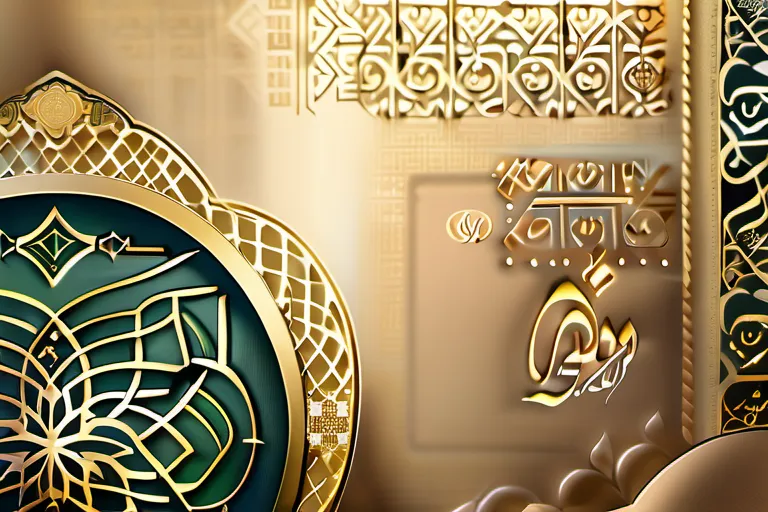Discover the significance, structure, and teachings of the Islamic holy book.
The Quran is one of the most sacred texts in Islam. It serves as a guide to Muslims worldwide, providing religious and ethical principles for everyday life. In this article, we’ll delve into the history, structure, and key teachings of the Quran. Let’s begin our journey of understanding this important Islamic text.
The History of the Quran
The story of the Quran begins long before it was ever inscribed on pages or compiled into a book. Imagine a vast, timeless desert, where the whispers of the divine have echoed through centuries. How did this ancient voice find its way to the heart of human understanding? When did these words first emerge from the lips of Prophet Muhammad (PBUH)? The journey is as complex and profound as it is fascinating.
The revelations that would come to be known as the Quran began in the early 7th century, around 610 CE. It was during this period of his life that Muhammad (PBUH) received his first revelation, which occurred in a cave called Hira. This initial encounter marked the beginning of what would become an ongoing dialogue between man and God. Was it a single event or a series of revelations that shaped the Quran? The answer is both—and this continuity is one of the many layers of significance embedded within these verses.
The challenges faced during the compilation of the Quran were daunting. Early attempts to memorize and write down the divine words required a remarkable degree of commitment from the community. As the revelations continued, the task became more complex, with varying interpretations and doubts. How did the early Muslims ensure that these verses remained true to their source? The answer lies in the meticulous efforts of those who transcribed and preserved them. These scribes and scholars dedicated themselves to safeguarding the purity and integrity of the Quran.
The process of compiling the revelations was not without controversy. Some believed that only certain parts were essential, while others argued for a more complete record. How did the community reconcile these differing views? The answer came through consensus, as the early Muslims worked together to create a cohesive and comprehensive text. This collaborative effort underscores the importance of unity in preserving the Quran.
The challenges faced by those who compiled the Quran were not just intellectual but also emotional and spiritual. The process required trust, devotion, and a deep understanding of the divine message. How did these individuals find the strength to persevere? Their dedication forms a powerful testament to the enduring legacy of the Quran.
The history of the compilation of the Quran is not just a tale of words but also of faith, commitment, and community. As we delve deeper into this narrative, it becomes clear that the Quran is more than a book—it is a living, breathing entity that continues to guide and inspire generations.
Structure and Organization of the Quran
Imagine opening a book that has been cherished for over 14 centuries, where each page holds not just words but profound wisdom and guidance. The Quran, the holy book of Islam, is structured in such a way that it serves as both a spiritual guide and a historical document. Each chapter within this book is known as a Surah, a term that signifies more than just a verse or section; it encompasses a complete message or theme.
The order of these Surahs is not random, but follows a specific sequence. This organization starts with the longest Surah, An-Nisa, and ends with the shortest, Kawthar. While this arrangement might seem complex at first glance, it actually reflects the evolution of religious teachings, moving from broader principles to more detailed instructions as one progresses through the book. It’s like following a journey map that starts with broad landscapes and then delves into intricate details.
The structure of the Quran is also unique in its presentation of Surahs. Some Surahs are Meccan, revealed during the early years when Prophet Muhammad (PBUH) was living in Makkah, while others are Medinan, given after his migration to Madinah. This division helps readers understand the context behind each Surah and how the guidance evolved over time. It’s as if the Quran is a living document, adapting and expanding its teachings to suit different environments and challenges.
Understanding the structure of the Quran, therefore, isn’t just about knowing where to find specific verses; it’s about grasping the flow of ideas and messages that have guided generations of Muslims. It’s like unraveling a thread in a tapestry, each piece revealing more of the intricate design as you go along.
Key Themes in the Quran
The Holy Quran: A Comprehensive Guide
Imagine diving into a vast ocean of wisdom and guidance, where every page is a treasure trove of profound insights. The Quran, the final testament of God to humanity, carries with it themes that resonate through time and space. One of its most central yet multifaceted concepts is monotheism. How can such a simple idea—there is only one God—hold so much weight in shaping human ethics and morality? It’s like a lighthouse guiding ships through stormy seas, illuminating the path to truth and righteousness.
Monotheism permeates every aspect of life according to the Quran. It calls for unity, harmony, and the rejection of any form of idolatry or polytheism. The Quran often emphasizes that the worship of multiple deities is a misunderstanding and a deviation from the true path. How can we possibly believe in many gods when there is only one who created everything? This central theme not only clarifies our understanding of God but also helps us navigate the complexities of interpersonal relationships, societal structures, and personal conduct.
Another pivotal theme is the moral values that permeate the Quran. From honesty and integrity to compassion and kindness, these teachings are more than just moral advice—they are essential for building a just and peaceful society. Consider how often stories of prophets like Abraham, Moses, and Jesus are narrated in the Quran. These narratives serve as a constant reminder of what it means to lead a virtuous life, filled with taqwa, or God-consciousness. They ask us: How can we live our lives in a way that pleases God? What actions truly reflect faith and righteousness?
The Day of Judgment is another powerful theme that echoes through the Quran’s verses. It serves as both an incentive for good deeds and a deterrent against evil. Imagine standing before your Creator, accountable for every action you’ve taken. How would this awareness transform our daily lives? The Quran outlines the consequences of our choices, urging us to prepare ourselves for what lies ahead. It’s like carrying a heavy burden of responsibility, but one that can also bring immense relief and satisfaction in knowing that our deeds will be judged fairly.
These themes—monotheism, moral values, and the Day of Judgment—are interwoven throughout the Quran, creating a tapestry of guidance for all humanity. They serve as pillars upon which we build our lives, striving to live by the principles taught in these holy verses. Through them, we find not only direction but also comfort and strength.
The Art of Tajwid: Reading the Quran
The Art of Tajwid: Reading the Quran
Imagine the Holy Quran as a masterpiece, crafted not just in words but also in rhythm and melody. The art of Tajwid, or the correct pronunciation and recitation of the Quran, is like the soul of this divine text. How many times have we wondered about the beauty hidden within its verses? Tajwid isn’t merely a set of rules; it’s an entire language of devotion that transforms mere reading into a spiritual journey.
Consider for a moment how each letter in the Quran carries meaning beyond its written form. Take the Makhaarij, or points of articulation, for instance. These specific places in the mouth and throat are crucial not just to correct pronunciation but also to convey the intended emotion and context of each word. Could you imagine reciting the Quran without these nuances? It would be like playing a symphony with just one instrument!
Intonation and rhythm in Tajwid add layers of meaning, almost as if they breathe life into the text. Think about it: when we read, our voice naturally rises and falls, emphasizing certain words or phrases. This natural cadence is precisely what Tajwid aims to enhance, making each recitation a moving experience. How does one achieve this? Through extensive practice and understanding of the rules that govern intonation, including Idgham, Iqlab, and Tasneef.
Moreover, Tajwid encompasses the concept of Madhhab al-Qira’at, or recitation schools. Each school has its unique approach to reciting the Quran, adding a rich tapestry of interpretations that reflect the diversity within the Islamic tradition. These differences can be subtle yet profound, guiding us on how to approach and understand different verses.
As we delve into Tajwid, we uncover not just the technical aspects but also the emotional and spiritual depth inherent in reciting the Quran. It’s a process that requires dedication, but one that rewards us with a deeper connection to this holy book. How can you harness the power of Tajwid in your own recitation? Start by exploring these techniques and gradually incorporating them into your practice.
The journey through Tajwid is a path of discovery, where every word resonates more profoundly than the last. Embrace it as an opportunity for spiritual growth and reflection, and let the beauty of the Quran’s artistry enrich your life in ways you never imagined.
The Impact and Influence of the Quran
The Holy Quran, often referred to as Kitab Allah, has had a profound and enduring impact on Islamic culture, society, and daily life. Imagine it as a river, its waters flowing through generations, shaping not just beliefs but also practices and art forms. How does the Quran influence the way Muslims navigate their world? Let’s explore this fascinating connection.
Consider the Quran’s role in Islamic art. The intricate designs found in mosques and Islamic manuscripts often reflect verses from the Holy Book, serving as a visual testament to its teachings. These artistic expressions are more than just decoration; they encapsulate the divine messages that guide Muslims’ lives. From calligraphic masterpieces to geometric patterns inspired by Quranic verses, every stroke of the pen or line drawn conveys a profound message.
In literature, the Quran has served as an endless source of inspiration for poets and writers across centuries. Think about how stories from the Quran have been retold and reimagined countless times in various literary forms, each adaptation adding a layer of depth to its timeless wisdom. Whether it’s through epic poems or simple narratives, these literary works not only entertain but also educate Muslims on moral and ethical principles.
The influence extends into law. The Quran provides the foundational principles that guide Islamic jurisprudence. Every ruling in Shariah law finds its roots in the divine text, making it a cornerstone of legal systems in many Muslim-majority countries. The Quran’s teachings on justice, compassion, and fairness shape not only legal practices but also social interactions, creating a harmonious society based on these core values.
Lastly, the Quran has a significant impact on morality. Its commandments and guidance provide a moral compass that guides Muslims in their personal lives. From honesty and charity to patience and perseverance, the verses of the Holy Book offer practical advice for living virtuous lives. This moral framework is deeply integrated into daily routines, influencing everything from business transactions to family relationships.
As we delve deeper into the Quran’s influence, it becomes clear that its impact is far-reaching and multifaceted. It continues to shape Islamic culture, society, and individual lives, ensuring that the teachings of Islam remain relevant and vital in today’s world. The river of knowledge flows on, enriching the souls of those who drink from its depths.
The Role of the Quran in Muslim Life
The Holy Quran, often referred to as Al-Quran, holds a central place in the lives of Muslims worldwide. How do they approach it? Is it just another book on their shelves, or does it actively shape their daily routines and values?
For many, studying the Quran is like peeling back layers of an onion; each layer reveals more depth. Imagine the Quran as a vast ocean; every time you dive in, you discover new treasures. Muslims often begin their study by reciting Namaz, the five daily prayers, which include verses from the Quran. This practice is not just about following rituals but also about internalizing its teachings.
Recitation of the Quran, or Tasfeer, goes beyond mere reading; it’s a journey into profound reflection and personal transformation. Think of reciting the Quran as drinking from a fountain of wisdom that quenches the thirst for knowledge and spiritual growth. Each verse carries lessons that resonate with daily life, guiding actions and decisions.
The role of the Quran in shaping Islamic values is undeniable. Its teachings on honesty, charity, justice, and compassion are woven into the fabric of Muslim communities. For instance, when a Muslim faces ethical dilemmas, they often seek guidance from the Quran to find clarity and direction. It’s like having a trusted mentor who offers advice during life’s challenging moments.
The application of Quranic teachings in daily life can be seen through various practices such as Zakat (charity) and Hajj (pilgrimage). These acts are not merely ceremonial but serve to strengthen one’s faith and contribute positively to society. In a way, the Quran is like a compass, guiding Muslims towards righteousness and integrity.
In essence, studying, reciting, and applying the teachings of the Quran transforms it from a mere text into an integral part of Muslim identity and community life. It is through these practices that the profound impact of the Quran on Islamic culture, society, and daily life becomes vividly clear. The journey of understanding and living by the Quran’s principles is both challenging and rewarding, offering a path to spiritual fulfillment and moral excellence.
Conclusion
 We hope you now have a better grasp of the significance and structure of the Quran. It is essential for Muslims to study and understand its teachings as part of their faith. The Quran serves as a source of guidance, morality, and inspiration for millions worldwide.
We hope you now have a better grasp of the significance and structure of the Quran. It is essential for Muslims to study and understand its teachings as part of their faith. The Quran serves as a source of guidance, morality, and inspiration for millions worldwide.











